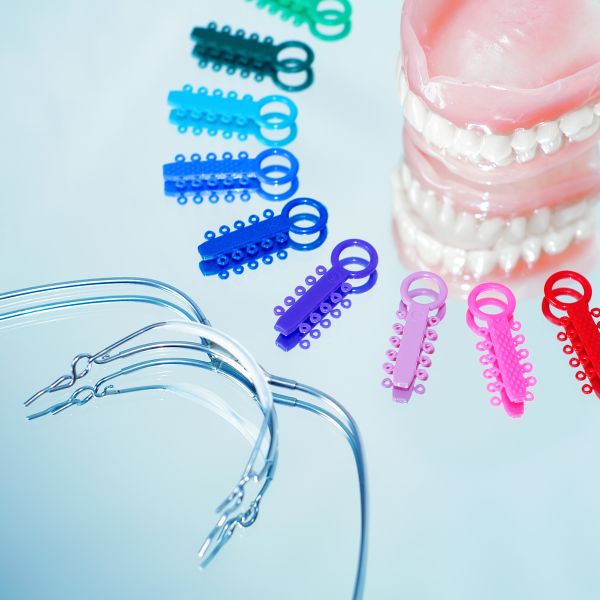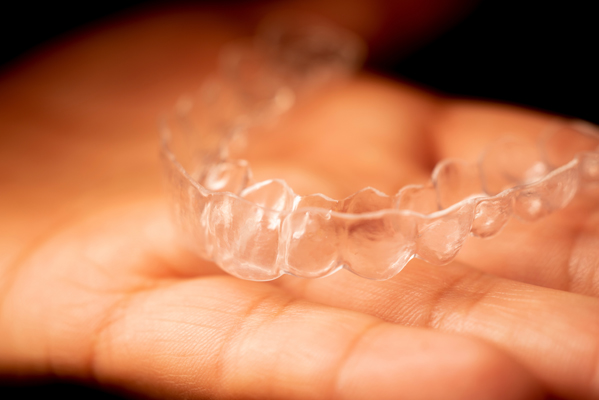How to Fix Your Smile: Clear, Ceramic or Traditional Braces?

When it is time to fix your teeth, gone are the days when the only option was to get traditional metal braces. These devices can be quite bulky, and they are highly visible in the wearer's mouth. That can leave the person feeling even more self-conscious than before the braces were installed.
Things are much different now. There are a handful of devices that can be used to straighten a person's smile, like clear braces, ceramic braces and lingual braces that are much less visible than traditional braces.
Here are three different types of braces that are commonly used to deal with teeth alignment issues.
Different types of braces
1. Traditional metal braces
Despite the fact that many new alternatives have emerged, traditional braces are still the most commonly used orthodontic devices. This is due to the fact these devices remain the most affordable way to straighten teeth. Metal braces have evolved a great deal in recent years, and newer designs are slicker than their predecessors. Patients now have the option of customizing their device with the color of the favorite sports teams or whatever else suits their personal style.
Today's metal braces are less invasive than the bulky contraption people had to wear decades ago that looked like TV antennas. Some modern traditional braces even come with improved components, like heat-activated wires that use the patient's body heat to increase comfort.
Pros
- They are the cheapest way to fix a patient's smile if dealing with alignment issues
- Colored bands and brackets are now available
- Metal braces are more effective than other alternatives
Cons
- They are very noticeable in the wearer's mouth
- Food tends to get stuck in the brackets
- Cleaning these devices can be difficult
2. Ceramic Braces
Ceramic braces are similar to metal braces with only a few exceptions. Instead of using brackets made from metal, these are made out of ceramics and are customized to be the same color as the patient's natural teeth. Instead of the brackets being connected with metal wires, ceramic braces often come with clear wires, making them very hard to detect.
Pros
- A more discreet option
- More effective than clear braces
- Cheaper than other alternatives besides metal braces
Cons
- Costs more than traditional braces
- Brackets can easily become stained, making them more visible
- Requires a higher level of maintenance to keep the device stain free
3. Clear braces
Clear braces are quickly becoming the most popular option when it comes to replacing missing teeth. It is a great solution for those who want to straighten their teeth without everyone they interact with being aware of their treatment.
The way these work is that the patient gets a series of aligners to wear for around two weeks at a time. Each pushes the person's teeth closer to the desired position.
Pros
- Are virtually invisible
- Can be easily removed for meals and cleaning
- Make discreet treatments possible
Cons
- More expensive than other options
- Not as effective as metal braces
- Easily lost when removed
Contact one of our dentists to learn more about the different types of braces.
Let's get started …
Request a dental appointment here: https://www.queensfamilydental.com or call Queens Family Dental at (718) 690-9597 for an appointment in our Astoria dental office.
Recent Posts
Clear braces are very similar to traditional metal braces, except clear braces have either tooth-colored or clear brackets. These brackets are made out of ceramic or another similar material. Because the brackets and wires blend in with your teeth, this type of braces offers a nearly unnoticeable solution for straightening your teeth, no matter what…
Understanding how Invisalign works is the first thing you must do when considering this popular teeth straightening option. You will undergo an initial evaluation performed by a dental professional, who will then assign you a certain number of custom-made aligner sets, which need to be switched out every two weeks. After using the last set…
Full mouth reconstruction involves replacing and repairing damaged or missing teeth. A treatment plan includes a variety of different treatments, and one common procedure is known as dental bridge treatment. This review takes a closer look at how general dentists use dental bridges to replace teeth during full mouth reconstruction. Most patients have several available treatment…
Severe tooth decay or damage is often treatable through root canal therapy. Despite its reputation, undergoing a root canal is similar to filling a cavity and is generally no more uncomfortable. Learning about the procedure and the recovery process can help alleviate concerns, helping patients see the benefits of preserving their smile with a root…


